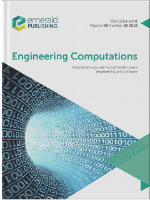
ENGINEERING COMPUTATIONS
Scope & Guideline
Pioneering advancements in engineering through computational research.
Introduction
Aims and Scopes
- Computational Mechanics:
The journal emphasizes the use of computational methods in mechanics, including finite element methods (FEM), boundary element methods (BEM), and meshless methods, applied to solve complex engineering problems. - Optimization Techniques:
Research on optimization methods, particularly multi-objective optimization and design optimization, is a core focus, aiming to improve efficiency and performance in engineering systems. - Machine Learning Applications:
Increasingly, the journal publishes studies that apply machine learning and artificial intelligence techniques to predict material behavior, optimize designs, and enhance engineering processes. - Simulation of Physical Phenomena:
The journal covers simulations of physical phenomena in various engineering contexts, including fluid dynamics, structural analysis, and thermal processes, using advanced computational techniques. - Interdisciplinary Approaches:
Research that bridges multiple engineering disciplines, such as mechanical, civil, and materials engineering, is encouraged, highlighting the interdisciplinary nature of modern engineering challenges.
Trending and Emerging
- Data-Driven Engineering:
There is a growing emphasis on data-driven approaches, including the application of machine learning and big data analytics in engineering design, predictive maintenance, and performance optimization. - Sustainable Engineering Practices:
Research focusing on sustainability, including energy-efficient designs, green materials, and eco-friendly engineering practices, is increasingly prevalent, aligning with global sustainability goals. - Advanced Materials Modeling:
The journal is seeing an uptick in studies related to the computational modeling of advanced materials, such as functionally graded materials and bio-inspired composites, reflecting the need for innovative materials in engineering. - Digital Twin Technology:
Emerging research on digital twins and their applications in real-time monitoring and predictive analytics for engineering systems is gaining traction, signaling a shift towards more integrated and smart engineering solutions. - Complex Systems Simulation:
There is a trend towards the simulation of complex systems that encompass multiple physical phenomena and interactions, requiring sophisticated computational models and interdisciplinary collaboration.
Declining or Waning
- Traditional Analytical Methods:
There is a noticeable decrease in papers focused on traditional analytical methods, as researchers increasingly favor computational and numerical approaches that provide more flexible and accurate solutions. - Basic Theoretical Studies:
The journal has seen fewer contributions that solely focus on theoretical explorations without computational applications, as the trend shifts towards applied research with practical implications. - Single-Disciplinary Studies:
Research that remains strictly within a single engineering discipline is less frequent, as interdisciplinary approaches become more prominent and necessary for addressing complex engineering problems.
Similar Journals
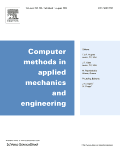
COMPUTER METHODS IN APPLIED MECHANICS AND ENGINEERING
Exploring Innovations at the Intersection of Engineering and Computation.COMPUTER METHODS IN APPLIED MECHANICS AND ENGINEERING, published by Elsevier Science SA, is a premier journal that has significantly contributed to the fields of computational mechanics, computer science applications, mechanical engineering, and the mechanics of materials since its inception in 1972. With an ISSN of 0045-7825 and an E-ISSN of 1879-2138, this journal is recognized for its rigorous peer-review process and is consistently ranked in the Q1 quartile across multiple categories, including Computational Mechanics and Mechanical Engineering. Its impressive Scopus rankings place it in the top tiers of its field, with a percentile ranking of 98th in Computational Mechanics. Researchers, professionals, and students will find the journal's comprehensive scope and high-quality articles invaluable for advancing their knowledge and practices at the intersection of engineering and computation. Although not an open-access journal, its impactful contributions to both theoretical and applied research make it an essential resource for anyone involved in these dynamic fields.
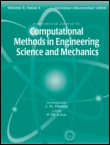
International Journal for Computational Methods in Engineering Science & Mechanics
Connecting Researchers to the Future of Computational ScienceThe International Journal for Computational Methods in Engineering Science & Mechanics, published by Taylor & Francis Inc., serves as a vital resource for researchers and professionals involved in the fields of computational mathematics and mechanics. With an ISSN of 1550-2287 and an E-ISSN of 1550-2295, this journal has been a cornerstone of scholarly communication since its inception in 2005 and will continue to publish cutting-edge research through 2024. Its impressive Scopus rankings highlight its impact within the field, placing it in the top quartiles for both Computational Mechanics (Q2) and Computational Mathematics (Q3), showcasing its significance for academics striving to push the boundaries of these disciplines. The journal features high-quality peer-reviewed articles that emphasize innovative computational methods, numerical analyses, and their applications in engineering science. While currently not available as an open-access option, this publication remains an essential reference for those seeking to stay at the forefront of computational methodologies in engineering practice.

Journal of Computational Applied Mechanics
Empowering Global Collaboration in Mechanics of MaterialsJournal of Computational Applied Mechanics, published by UNIV TEHRAN, DANISHGAH-I TIHRAN, is an influential open-access journal that has been disseminating significant research findings since its inception in 2012. With a dedicated focus on the fields of Computational Mechanics, Mechanical Engineering, and Mechanics of Materials, this journal has garnered a Q3 ranking in multiple relevant categories as of 2023, indicating its burgeoning impact within the academic community. Although precise HIndex scores are currently unavailable, the journal's recognition is underscored by its Scopus rankings, placing it in the middle tier among its peers. The journal invites researchers, professionals, and students to contribute to and engage with the continually evolving discourse in applied mechanics, fostering innovation through the dissemination of quality research. As an open-access journal, it ensures that findings are readily accessible to a global audience, thereby enhancing collaboration and knowledge sharing in the scientific community.

APPLIED MATHEMATICAL MODELLING
Advancing Real-World Solutions Through Mathematical InnovationApplied Mathematical Modelling is a premier journal published by Elsevier Science Inc, dedicated to advancing the field of applied mathematics through the dissemination of high-quality research. With an impressive Impact Factor that places it in the Q1 category for both Applied Mathematics and Modeling and Simulation, this journal has established itself as a critical resource for researchers and practitioners alike, boasting a Scopus rank of #17 out of 635 in Applied Mathematics and #15 out of 324 in Modeling and Simulation. Since its inception in 1976, it has provided a vital platform for innovative models and techniques that drive progress across various scientific disciplines. Researchers will find an extensive range of articles addressing contemporary issues and developments, making it an essential read for anyone interested in the application of mathematical frameworks to real-world problems. While the journal maintains a subscription-only access model, its impactful contributions ensure that it remains an influential voice in the landscape of applied mathematics.

Journal of Mathematical Fluid Mechanics
Advancing Knowledge at the Intersection of Mathematics and Fluid MechanicsThe Journal of Mathematical Fluid Mechanics, published by SPRINGER BASEL AG, is a prestigious academic journal dedicated to the study of fluid dynamics through the lens of mathematics. With its ISSN 1422-6928 and E-ISSN 1422-6952, this journal has firmly established itself in the academic community since its inception in 2004, converging knowledge across various mathematical disciplines until 2024. Recognized in the top Q1 quartile rankings for Applied Mathematics, Computational Mathematics, Condensed Matter Physics, and Mathematical Physics as of 2023, it reflects a strong commitment to high-quality research and innovation. The journal features a variety of research articles, reviews, and theoretical frameworks, serving as an essential resource for researchers, professionals, and students eager to explore the mathematical principles underlying fluid mechanics. While it does not offer open access, the impact of its contributions resonates within interdisciplinary fields, advancing both theoretical insights and practical applications.

ARCHIVES OF COMPUTATIONAL METHODS IN ENGINEERING
Exploring New Frontiers in Computational Engineering Methodologies.ARCHIVES OF COMPUTATIONAL METHODS IN ENGINEERING, published by SPRINGER, is a premier journal dedicated to advancing the fields of applied mathematics and computer science applications. With an impressive impact factor and a distinguished ranking of #5/635 in Applied Mathematics and #19/817 in Computer Science Applications as of 2023, this journal stands in the upper echelon of academic literature, evidenced by its classification in the Q1 category. Established in 1994 and running through to 2024, the journal serves as a vital platform for the dissemination of research that utilizes computational methods to solve complex engineering problems. Researchers, professionals, and students alike benefit from its rigorous peer-review process and high-quality articles, fostering innovation and collaboration within the computational engineering community. Although it does not offer Open Access, its insights are invaluable for those looking to stay at the forefront of engineering methodologies and computational advancements.

Frontiers in Mechanical Engineering-Switzerland
Empowering Global Collaboration in Mechanical EngineeringFrontiers in Mechanical Engineering-Switzerland, published by FRONTIERS MEDIA SA, is a pioneering open-access journal that has been fostering innovations in the field of mechanical engineering since its inception in 2015. Based in Switzerland, this journal provides a robust platform for disseminating cutting-edge research across multiple disciplines within mechanical engineering, including materials science, industrial and manufacturing engineering, and computer science applications. With impressive Scopus rankings, including Q2 statuses in key categories such as Industrial and Manufacturing Engineering and Mechanical Engineering, it stands out as a valuable resource for researchers and practitioners aiming to stay abreast of trends and breakthroughs in these fields. By embracing open-access principles, the journal ensures that high-quality research is readily available to a global audience, thereby promoting collaboration and knowledge sharing. As it continues to grow, Frontiers in Mechanical Engineering is poised to make significant contributions to both academic and professional communities, enhancing understanding and advancing practices in engineering disciplines.
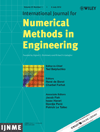
INTERNATIONAL JOURNAL FOR NUMERICAL METHODS IN ENGINEERING
Empowering innovation through rigorous numerical analysis.INTERNATIONAL JOURNAL FOR NUMERICAL METHODS IN ENGINEERING, published by WILEY, stands at the forefront of research in the fields of applied mathematics, engineering, and numerical analysis, as evidenced by its prestigious Q1 category rankings across these disciplines for the year 2023. With a long-standing legacy since 1969 and an impressive trajectory projected through 2024, this journal is dedicated to advancing the methodologies and applications of numerical techniques in engineering contexts. Researchers and professionals can access cutting-edge findings that contribute significantly to the optimization and innovation of engineering practices. Although it operates under a subscription model, the journal's impact factor and high citation rates underscore its vital role in influencing contemporary engineering research and education. Its rigorous selection process ensures high-quality, peer-reviewed articles that reflect the latest advancements and challenges in the field, making it an indispensable resource for academics, industry experts, and students alike.
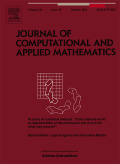
JOURNAL OF COMPUTATIONAL AND APPLIED MATHEMATICS
Empowering Innovation Through Computational InsightsJOURNAL OF COMPUTATIONAL AND APPLIED MATHEMATICS, published by Elsevier, stands as a premier platform for researchers and practitioners in the fields of applied and computational mathematics. With an impressive convergence history from 1975 to 2025, this journal has established itself as a crucial reference point for innovative mathematical theories, methodologies, and applications. Holding a distinguished position in Scopus rankings—#85 out of 635 in Applied Mathematics and #36 out of 189 in Computational Mathematics—it operates in the highly competitive Q2 quartile for both disciplines as of 2023. Although currently not designated as an open-access journal, it remains widely respected for its rigorous peer-review process and high-quality research contributions. Researchers and professionals seeking to advance their work and engage with cutting-edge developments will find this journal an invaluable resource, fostering a deeper understanding and collaboration within the mathematical community.

JOURNAL OF ENGINEERING MATHEMATICS
Empowering scholars with cutting-edge mathematical methodologies.Welcome to the JOURNAL OF ENGINEERING MATHEMATICS, a leading scholarly platform published by Springer that has contributed significantly to the fields of engineering and mathematics since its inception in 1967. With an esteemed Q2 ranking in Engineering and a Q3 ranking in Mathematics according to the latest categorization, this journal is recognized for its rigorous peer-reviewed content that showcases innovative research across various mathematical and engineering disciplines. Researchers and professionals alike will find valuable insights within its pages, as it covers theoretical developments and practical applications that are pivotal for advancing knowledge in these critical areas. The journal maintains a robust presence in the global academic landscape, evidenced by its positioning in the 74th percentile for General Mathematics and 52nd percentile for General Engineering in Scopus rankings. As we look forward toward our convergence years spanning from 1967 to 2024, the JOURNAL OF ENGINEERING MATHEMATICS continues to invite submissions that foster interdisciplinary dialogue and exploration, making it an essential resource for students, academics, and industry experts.